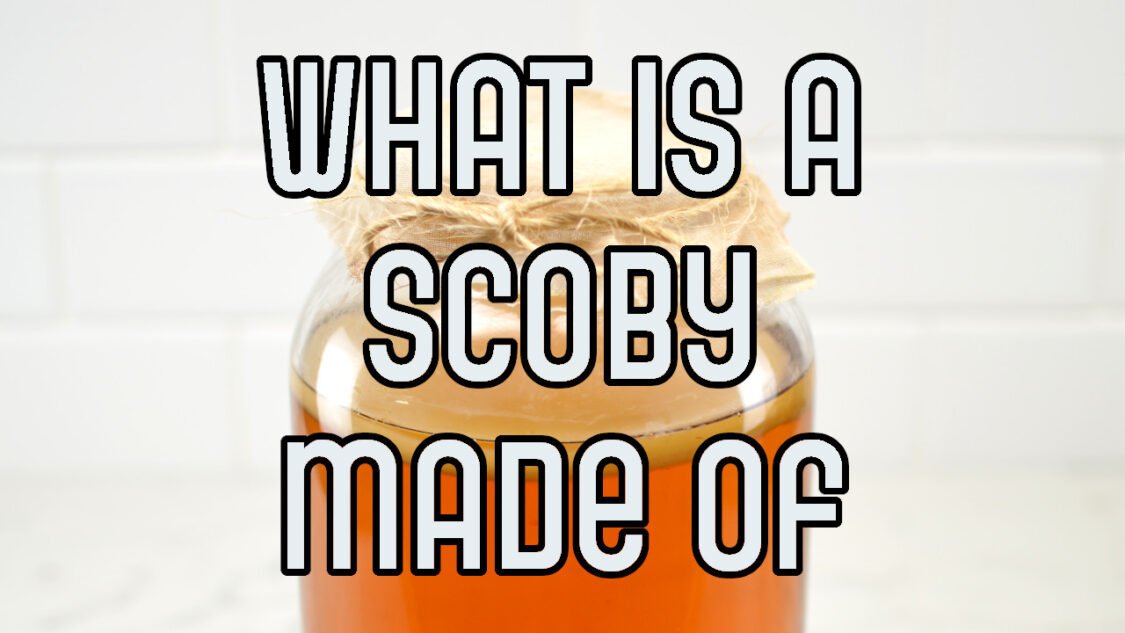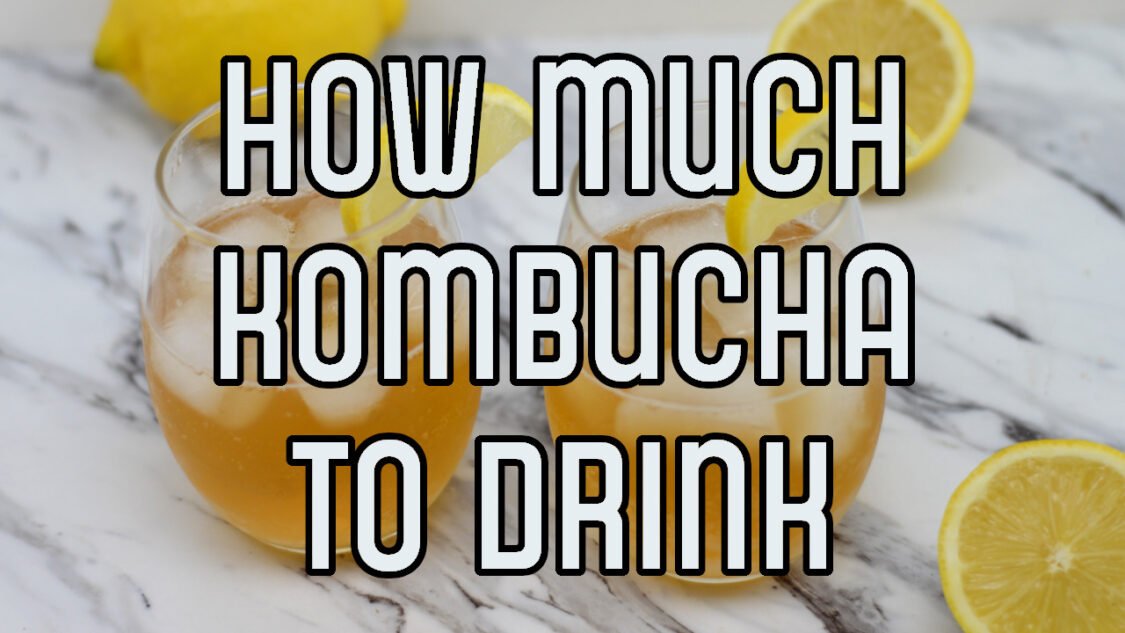How Much Sugar is In Kombucha?
Since kombucha is essentially fermented sweetened tea it’s common to wonder how much sugar is in kombucha after fermentation
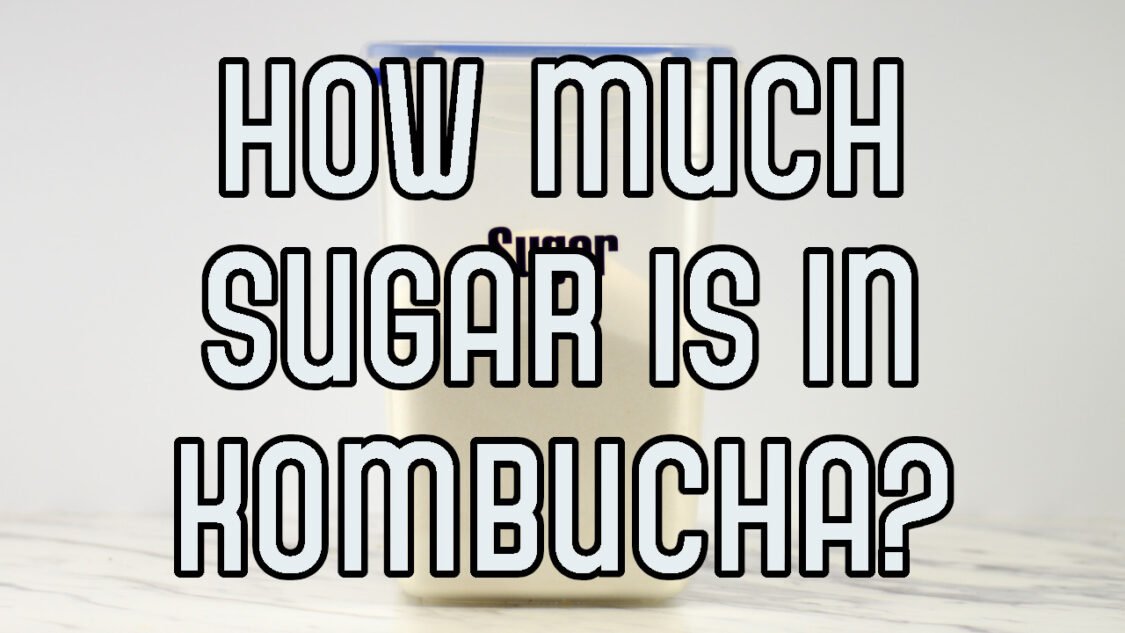
Kombucha is a refreshing and delicious beverage; however, since it is made with sugar sweetened tea people often wonder how much sugar it contains.
This is especially important to understand for those with diabetes or following a ketogenic diet and are striving to limit their sugar intake and. For them drinking any beverage loaded with sugar is counterproductive to their health and diet goals.
Why is there sugar in kombucha?
Many variables throughout the brewing process lead to different final sugar content of kombucha. The kombucha brewing process uses sugar as a key raw ingredient and the bacteria and yeast digest the sugar as it ferments; however, some residual sugars remain. Additionally, a second fermentation with fruit or fruit juice can adds more sugar to the finished kombucha. (read about the best sugar for making kombucha here)
Here are some of the factors that control how much sugar is in the finished kombucha:
- The amount and strength of the kombucha used as the starter liquid. The more Kombucha or stronger used as the starter, the faster it digests the sugar
- The temperature of the kombucha fermentation – warmer fermentation temperatures result in faster fermentations and a lower final sugar content. Inversely cooler kombucha fermentation temperatures will potentially result in a higher residual sugar content,
- Duration of the kombucha fermentation. The longer fermentation time will allow the yeast to consume more of the sugars into other compounds.
- Fruit and or fruit juices added for flavoring and carbonation affect the finished sugar content.
No two fermentations are the same. You could brew five different gallon jars of kombucha at the same time, each using the same sweet tea, kombucha starter liquid and ferment in the same location. Each gallon ferments at a different rate so to ensure consistent results you could measure the residual content of sugar as the fermentation progresses.
How Much Sugar Is in Kombucha?
Regular homemade kombucha has about 12g of sugar per 250ml (1 cup), or 46g per liter. When compared to other beverages, homemade kombucha typically contains less sugar on a per-serving basis.
Sugar content of common drinks:
- Regular (plain) homemade kombucha: 12g
- Vitamin water: 12g
- Cow’s milk: 14g
- Coconut water: 14g
- Energy drink: 15g+
- Apple juice 100%: 25g
- Soda: 27g+
Can I Make Kombucha Without Sugar?
No. The sugar in kombucha provides food and energy for the yeast to consume as part of the fermentation process. Without the sugar there would be no fermentation and you would be left with slightly tart tea.

How to Measure Sugar Content of Kombucha
Now that you understand the sources of sugar in kombucha and the potential sugar content, let’s talk about some common methods for measuring the sugar content of your kombucha. The following methods and tools can be used to measure the sugar content of your kombucha:
- Sugar Test Strips – Sugar test strips can be used by simply dipping the test strip into the kombucha and reading the measure – Buy Accuvin residual sugar test strips (affiliate link ↗)
- Refractometer – a refractometer is an instrument that measures sugar concentrations of liquid solutions like kombucha. It only requires a few drops of liquid for testing. Buy a refractometer (affiliate link ↗)
- Hydrometer – a hydrometer measures the density of liquids (like kombucha) which allows the sugar content to be determined. Measuring the sugar content of kombucha with a hydrometer takes about 1 cup (250 ml) of kombucha. Buy a hydrometer (affiliate link ↗).
- Taste – Testing the sugar content of kombucha via taste ensures the sugar content is where you like it. Simply take a small sample of your kombucha (one way is to dip a straw down into the kombucha, put your finger on the top of the straw and pull it from the liquid and drop it into your mouth)
Using A Refractometer to Measure Kombucha SUgar Content
Before using your refractometer you should calibrate it by placing a couple drops of water on the lens and adjusting the screw in the side wall of the refractometer so that it reads 0 on the blue line. Now you are ready to test your kombucha!
- Ensure your kombucha and refractometer are room temperature. Most refractometers are calibrated to measure in this range.
- Place a drop of kombucha on the refractometer lens.
- Close the protective plastic cover down over the drop of Kombucha
- Look through the lens of the refractometer.
- Note the number on the blue line.
- Calculate the amount of sugar in your kombucha using the number on the blue line
- 1 Brix = 1% sugar (1g of sugar per 100ml of liquid), 1 Brix is also ½ tsp of sugar per cup of kombucha
- Say your refractometer is reading 2 Brix, meaning your kombucha is 2% sugar. That equals 2g sugar per 100ml. Since there are 250 ml per cup, your kombucha has 5 grams of sugar per cup.
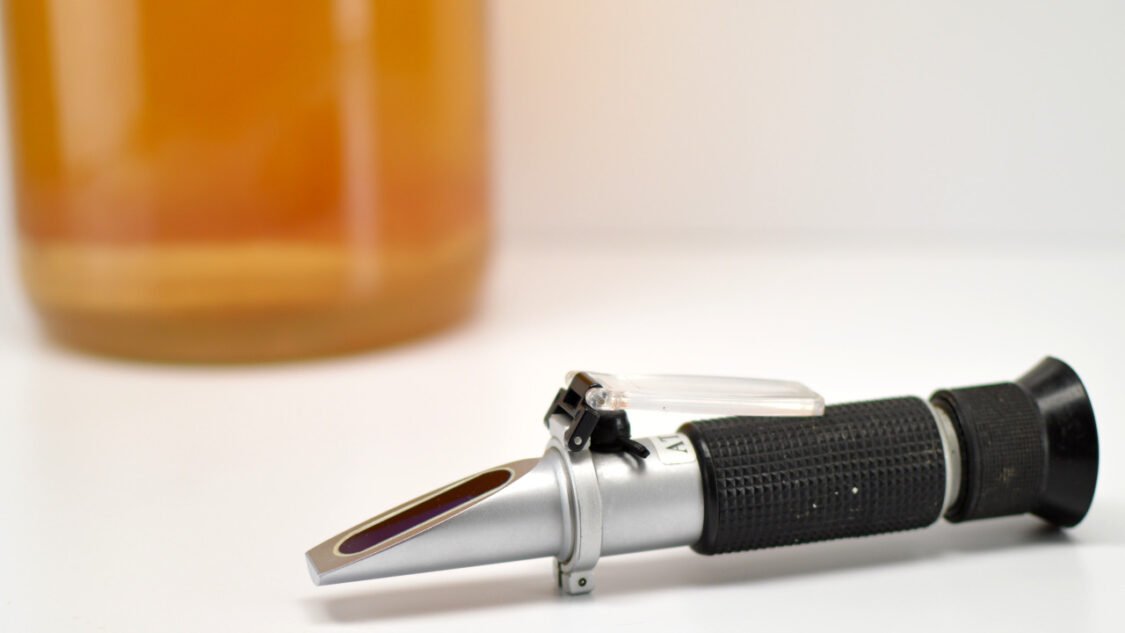
Using A Hydrometer to Measure Kombucha Sugar Content
The hydrometer kit comes with a tube which you fill with kombucha. The hydrometer, which looks like a floating thermometer, is then set in the tube. It will float, depicting a reading of the sugar content level marked on the side of the hydrometer.
- Fill the plastic tube that the hydrometer comes with room temperature kombucha. This is the kombucha sample
- Place the hydrometer in the tube with the kombucha sample and let it settle
- Read the hydrometer – Where the surface of the kombucha sample meets the surface of the air is the final measurement. This is known as the Specific Gravity (SG)
- Discard the kombucha sample as it no longer clean. Adding the sample back into the kombucha fermenter could cause contamination of the whole batch
- Calculate the sugar content in Brix = (((182.4601 * SG -775.6821) * SG +1262.7794) * SG -669.5622)
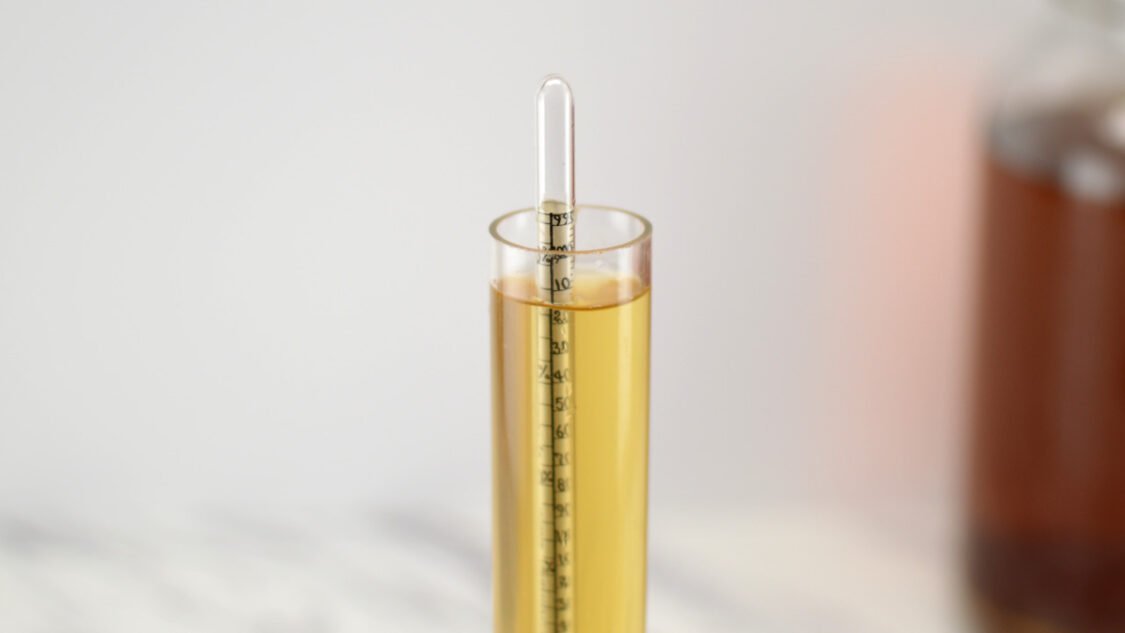
Helping you learn to brew kombucha, find inspiration for new kombucha flavors and use kombucha to make kombucha mocktails


